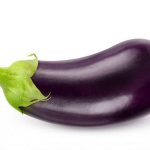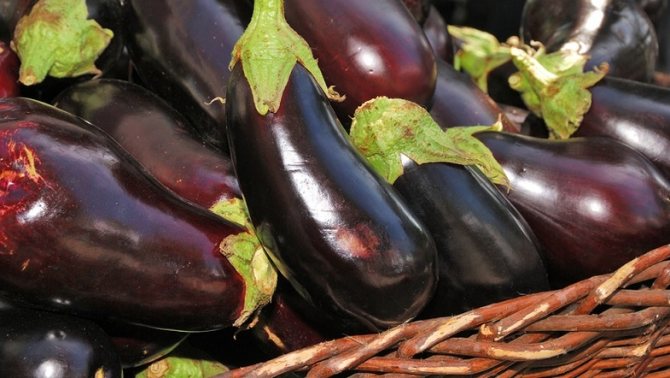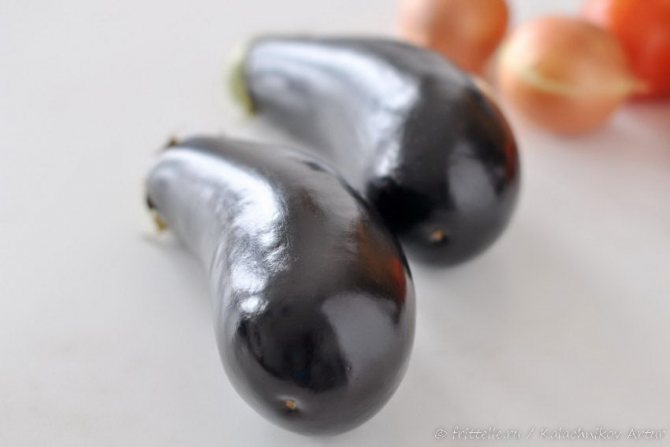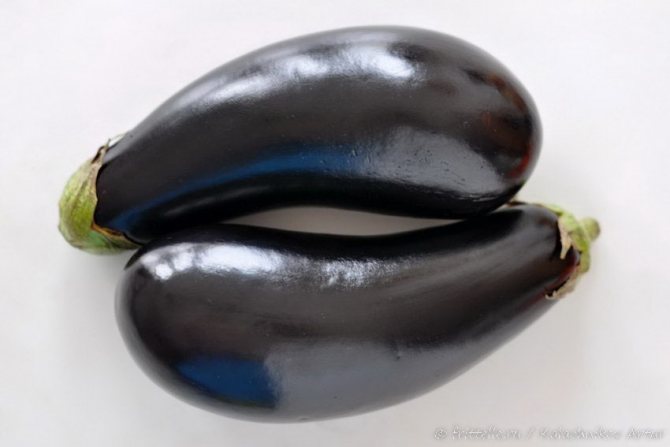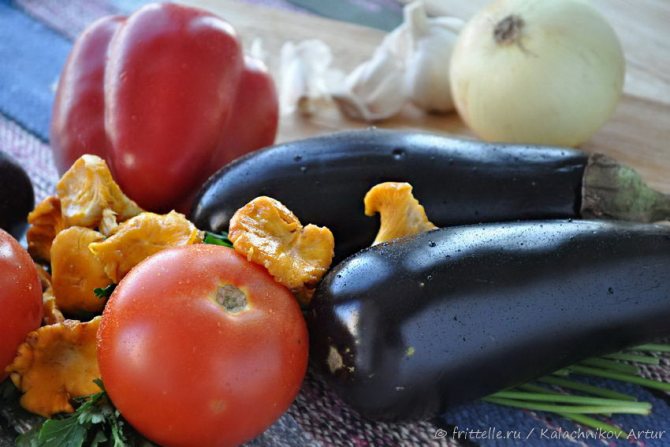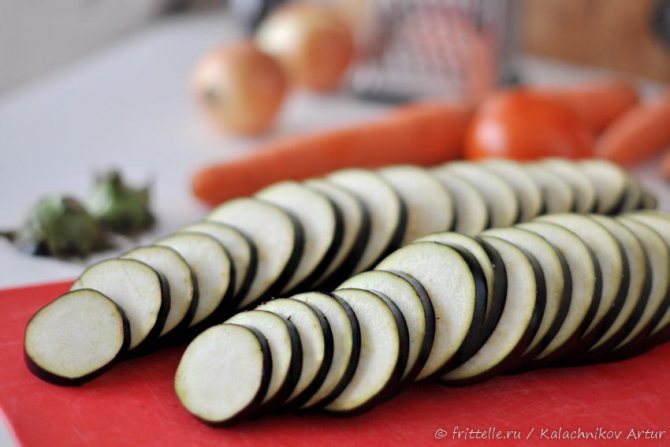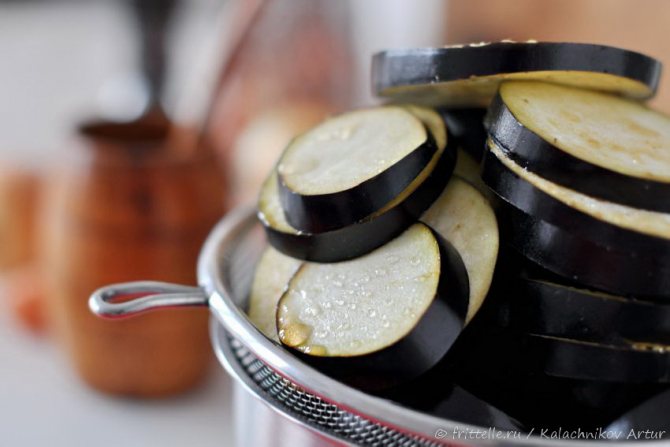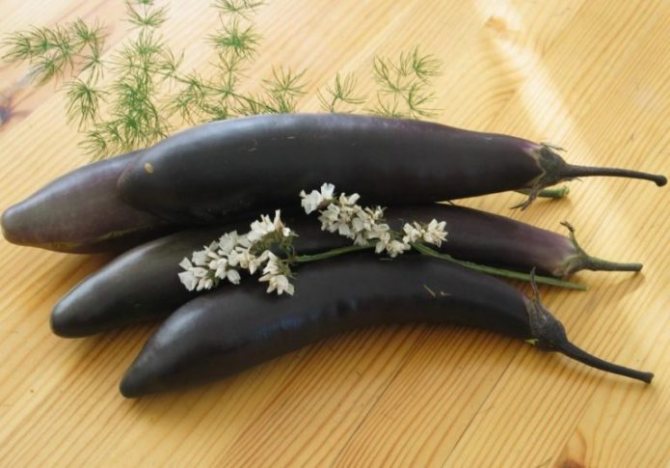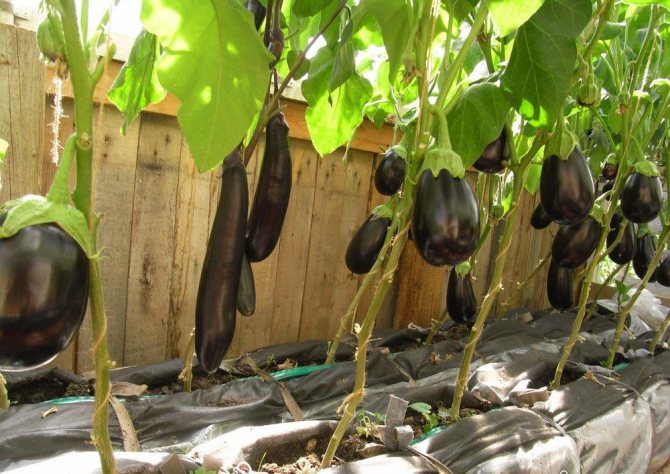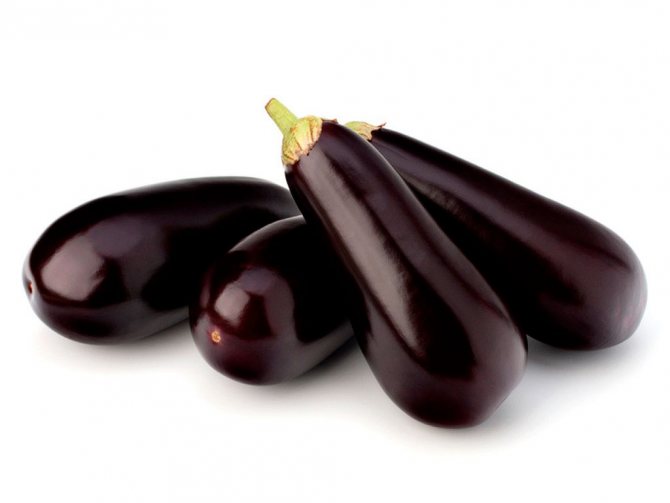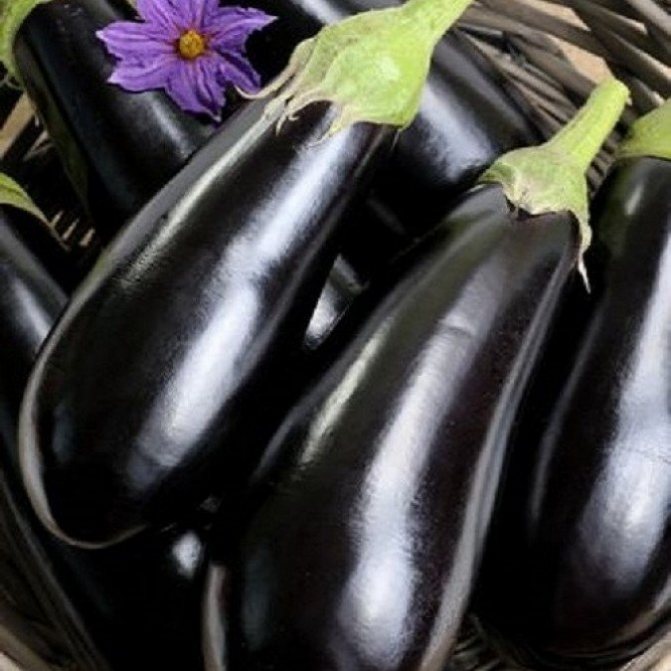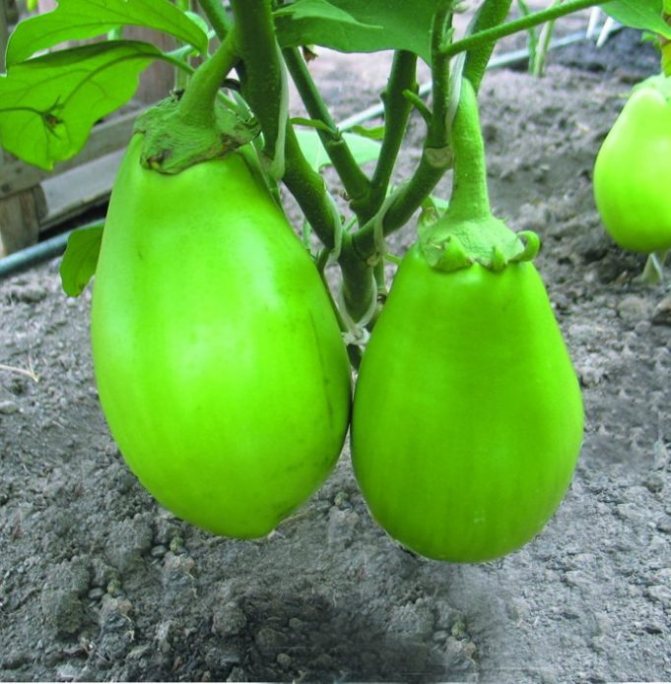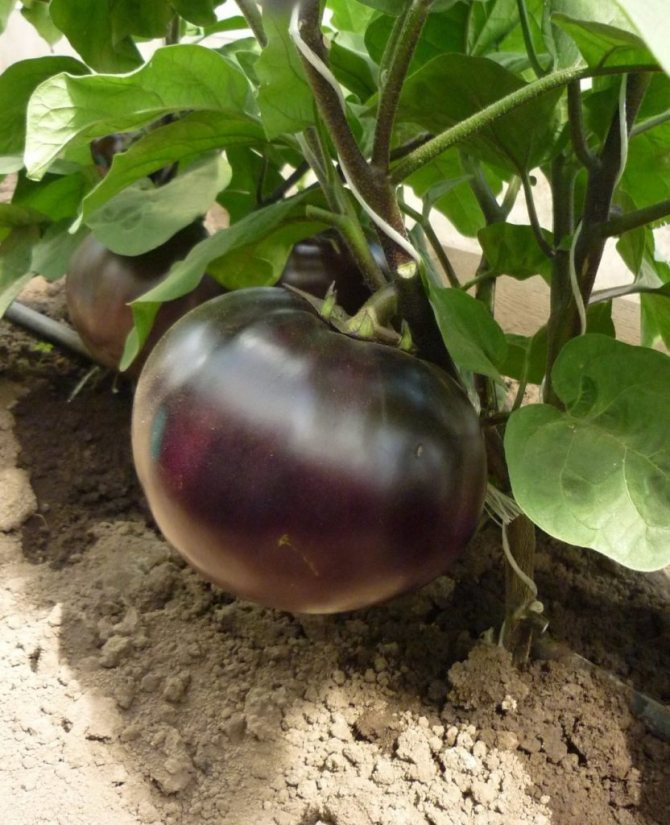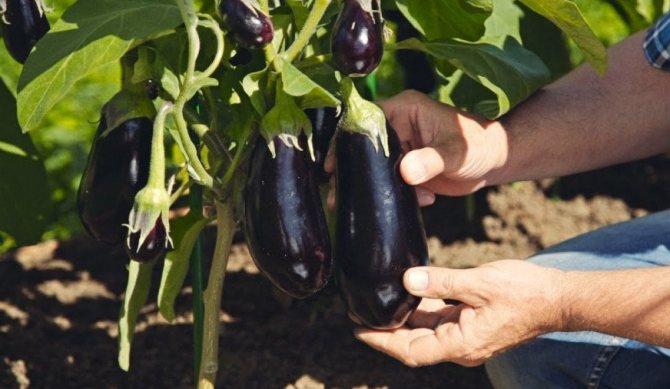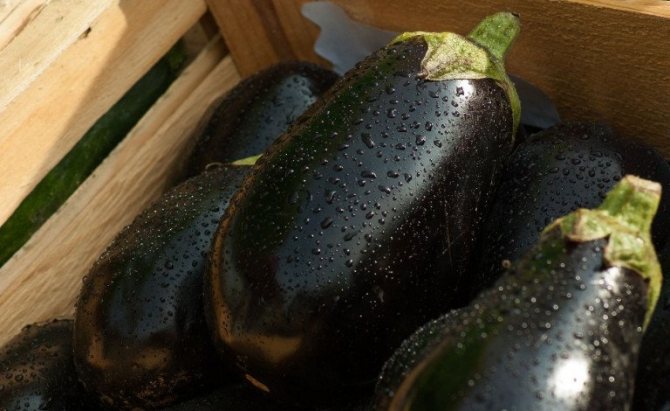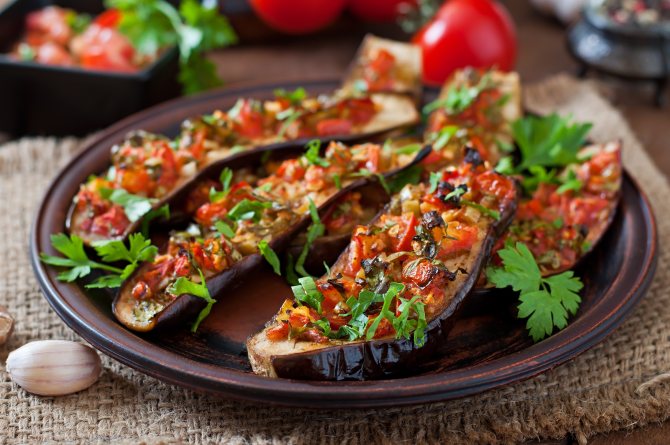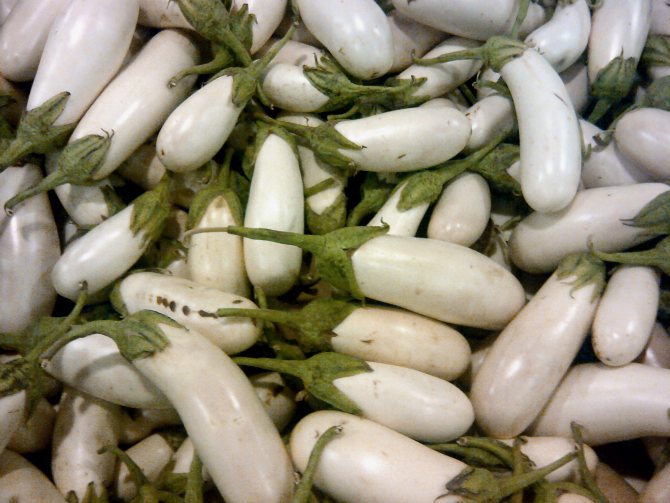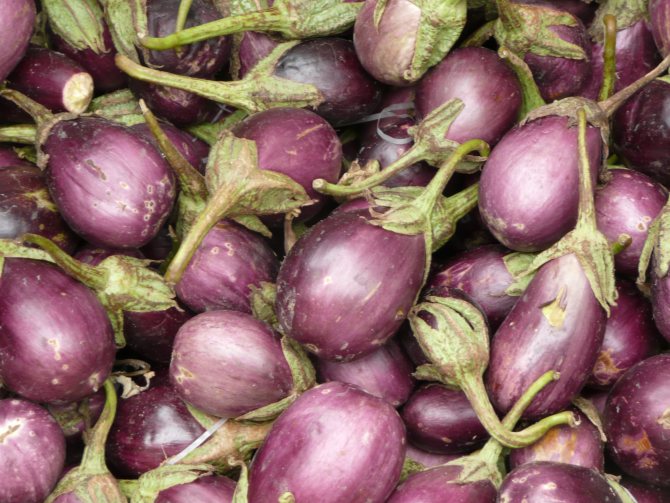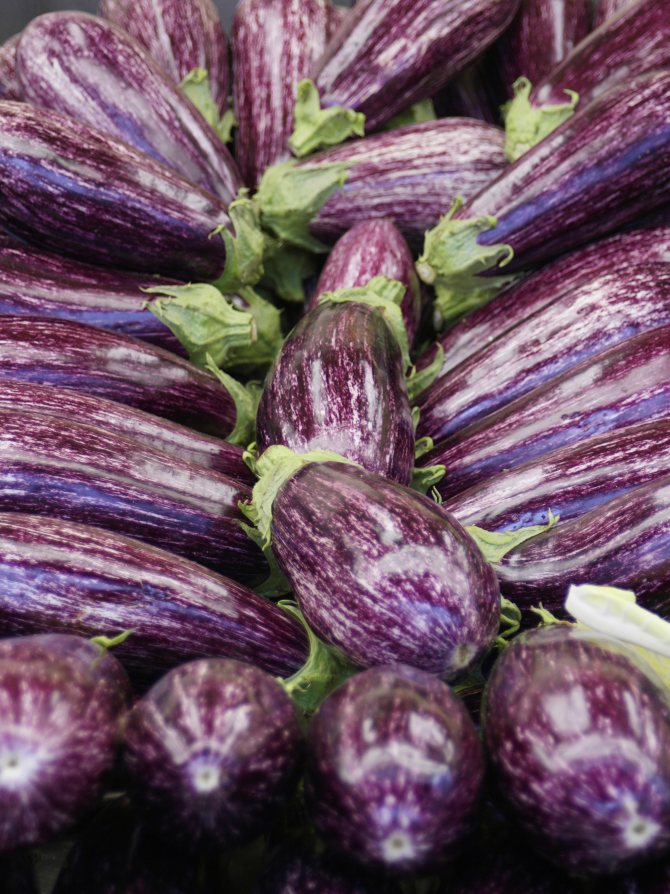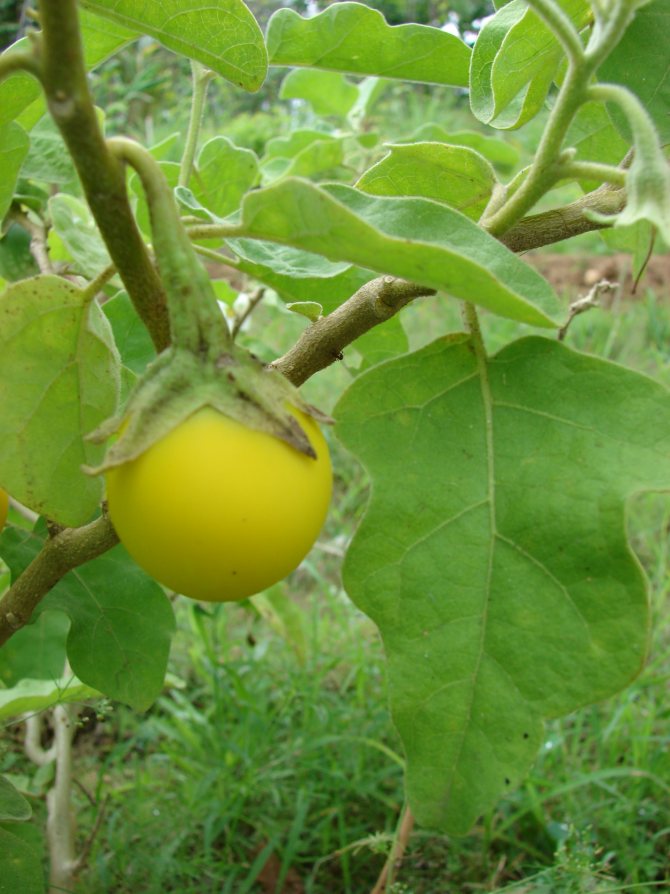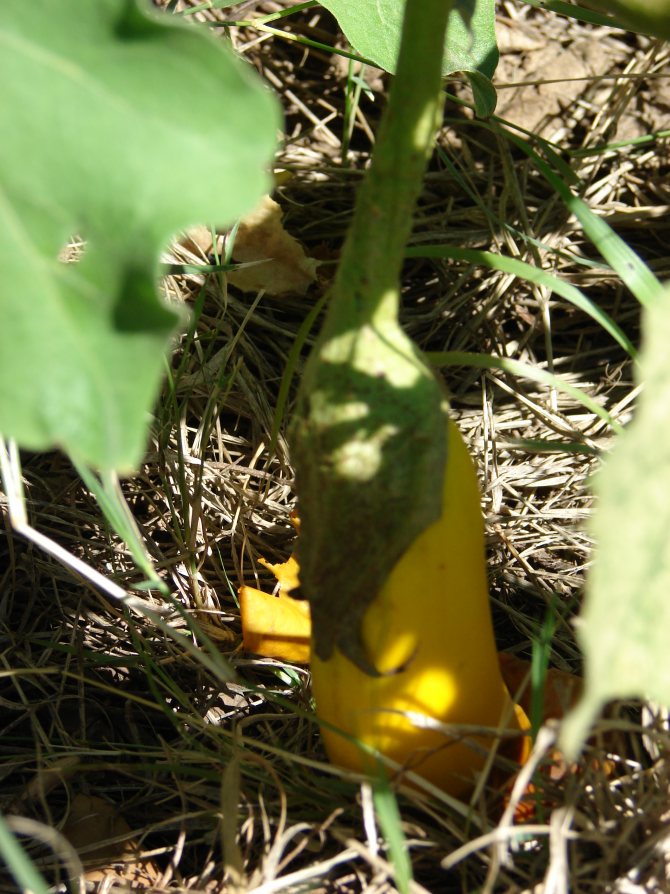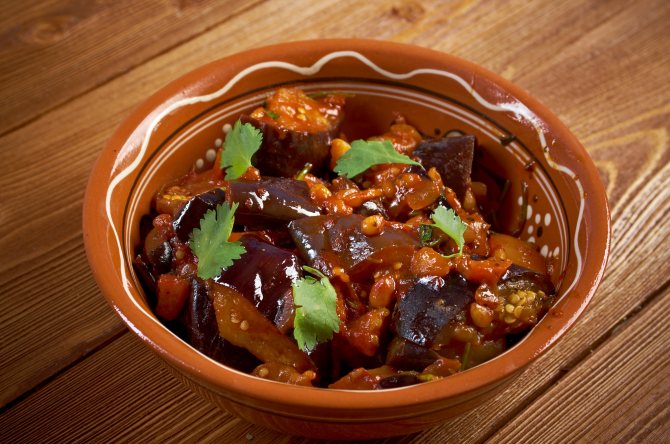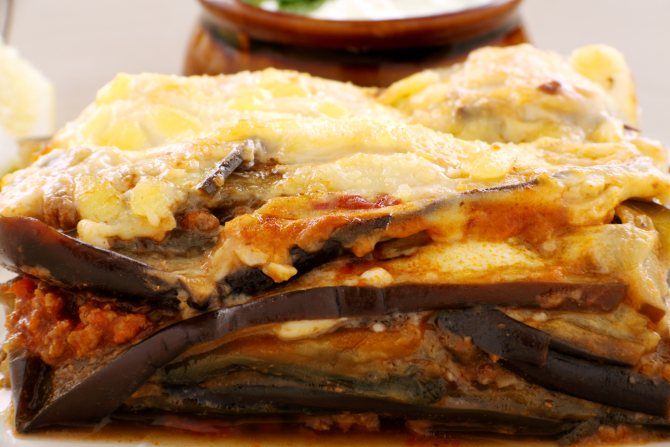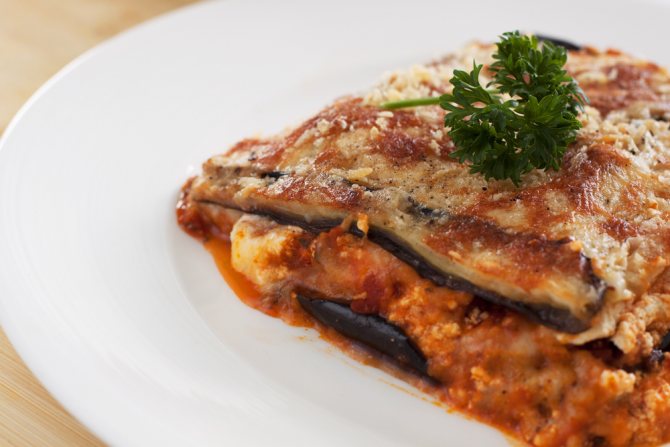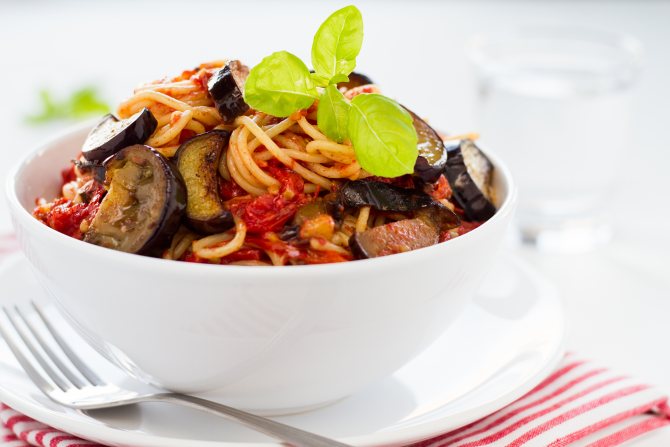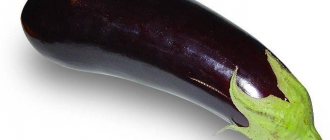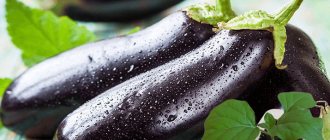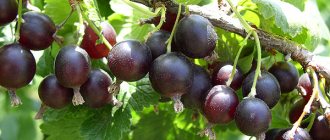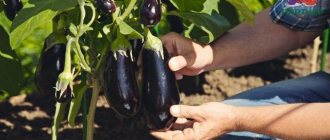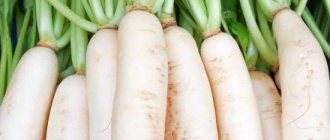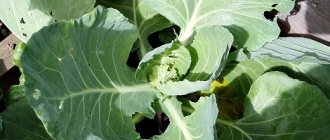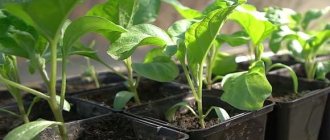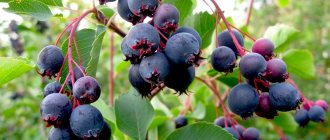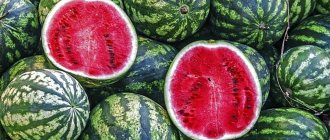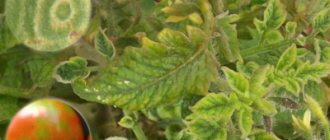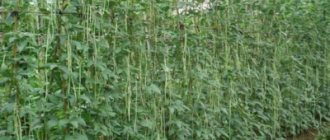Vegetable growing »Eggplant
0
1242
Article rating
One of the most popular plants grown in the garden is eggplant. At the same time, it is not clear whether eggplant is a vegetable or a berry?
Eggplant is a vegetable or berry
The origin of the eggplant
Eggplant belongs to the nightshade family, along with tomato, potato and tobacco. Like many members of this family, the fruit of an eggplant is a berry. However, from a culinary point of view, it is classified as a vegetable. Therefore, the answer to a question of interest to many will depend on the context.
Where do the "blue" ones come from (as eggplants are called among the people)? Their homeland is India and South Asia, where you can still find wild species of this plant. Europeans tasted and began to actively grow eggplants only in the 19th century. In our country, it is bred in areas with a favorable climate: in the Krasnodar Territory, Astrakhan and Rostov regions.
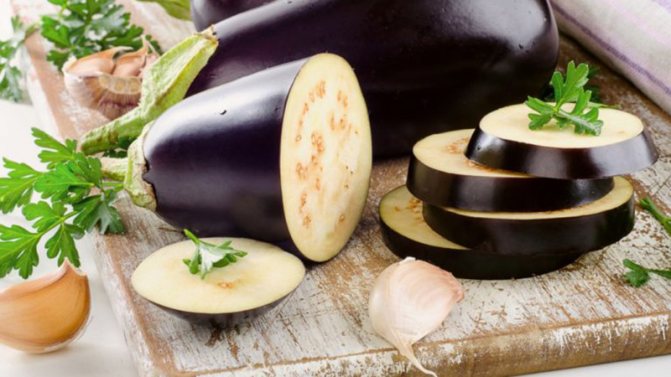
Fruits, vegetables, berries - do we correctly name what we eat?
The fruit
The word "fruit" is of Latin origin.
The word “fruit” is of Latin origin (fructus) and literally means “fruit”. It turns out that a fruit, in principle, can be called the fruit of any plant? Modern dictionaries call fruit the sweet fruit of a number of shrubs and trees. This interpretation is more familiar to us - we used to call pears, apples, plums and many other fruits fruits.
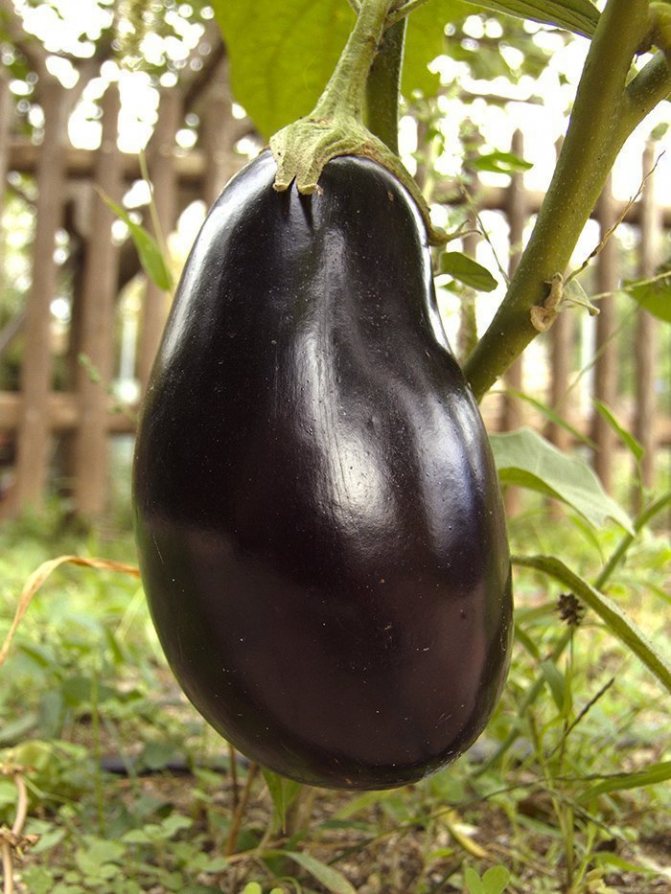

Vegetable
What vegetables are, science does not explain.
What vegetables are, science does not explain. This is also, in general, fruits ... It is customary to call vegetables such fruits that can be consumed without heat treatment, such as cucumbers, tomatoes, bell peppers. At the same time, potatoes and eggplants are also called vegetables, although no one eats them raw. The potato, we know, is a root vegetable. But what about eggplant? It certainly cannot be a root crop ... What kind of fruit is it, how to properly name an eggplant - a fruit or a vegetable, or maybe a berry?
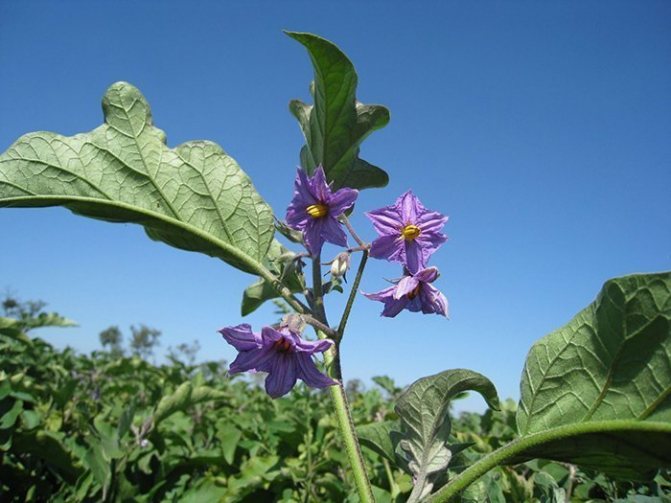

Berry
Berries.
Berries are understood as fruits with juicy pulp that develop from the ovary of a flower and are covered with a shell on the outside. Eggplant fits this definition perfectly. But on the other hand, it turns out that zucchini, tomatoes, and oranges with tangerines can be called berries. And strawberries with raspberries are not berries at all, although we call them that. It turns out that scientific classification is often at odds with our usual ideas. Still, let's turn to science.
Characteristics
Eggplant (or dark-fruited nightshade) is a perennial herb. Sprawling bush, up to 150 cm high. Flowering nightshade usually occurs in the summer. Fruit ripening usually occurs 100-150 days after germination.
The fruit is a complex berry by its botanical characteristics. The weight of such berries reaches 2 kg, and the color can be different and depends on the variety: they can be the usual purple color (see photo), white, yellow and dark green. Inside the fruit are small, rounded seeds that ripen in late summer or early autumn. The fruits are consumed in the technical ripeness phase - before the seeds ripen. The eggplant bush has a powerful root system, its diameter can reach 2 m.
The fruits are of high nutritional value. 100 g of the edible part of eggplant contains on average 0.5-1.5 g of proteins, 0.1-0.5 g of fat and 4-5 g of carbohydrates. The average calorie content is 24 kcal per 100 g of product, which allows it to be classified as low-calorie foods.
"Blue" are rich in vitamins B and C, in lower concentrations they contain vitamins A, K and PP. Also, eggplant fruits contain iron, phosphorus, copper and a large amount of potassium (up to 240 mg per 100 g).
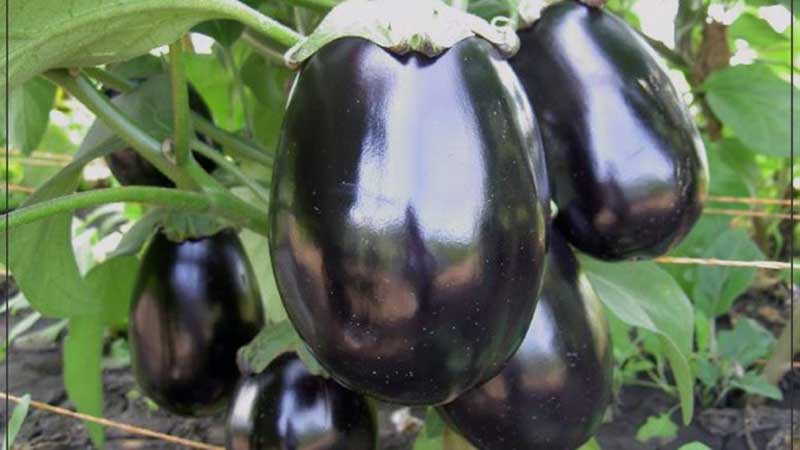

Beneficial features
Eggplant is a unique berry, because it contains vitamins, minerals and nutrients. Include a wonderful fruit in the diet, and you will saturate the body with iron and potassium, which have a beneficial effect on the work of the cardiovascular system. Vitamins C, B and PP will improve your immune system, as well as get rid of the signs of colds. Just 100 grams of the product can provide your body with a number of essential components that rarely get into it with food. Eggplant will saturate you with copper, phosphorus and magnesium.
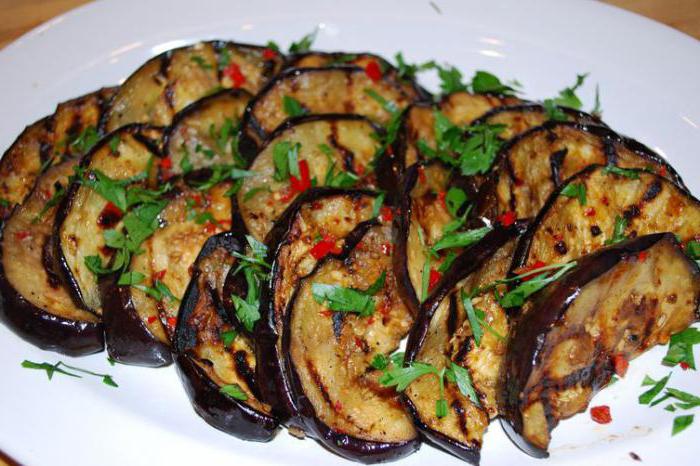

Do you want to improve intestinal motility? Then use a berry from the Solanov family. The fruits contain a large amount of fiber, which will cleanse the intestines of toxins, toxins and heavy metals.
Benefit and harm
Thanks to the vitamins and minerals contained in eggplants, their systematic use has a positive effect on human health:
- prevents the formation of blood clots;
- lowers blood pressure;
- has an antibacterial effect thanks to vitamin C;
- lowers blood cholesterol levels;
- due to its low calorie content and minimal fat content, eggplant is considered a dietary product and is used for weight loss.
The "blue" ones have almost no harmful properties. However, people with gastritis or ulcers should use eggplants with caution - their digestion may not be able to cope with the coarse fiber of the vegetable.
Do not overcook the eggplant, because its pulp tends to accumulate fats and carcinogens.
The ripe fruit is loaded with the poison solanine, which causes nausea, vomiting, and diarrhea.
Important! Overripe eggplants are covered with brown spots, they have an excess of seeds, the stalk looks rotten. Least of all solanine in white eggplants.
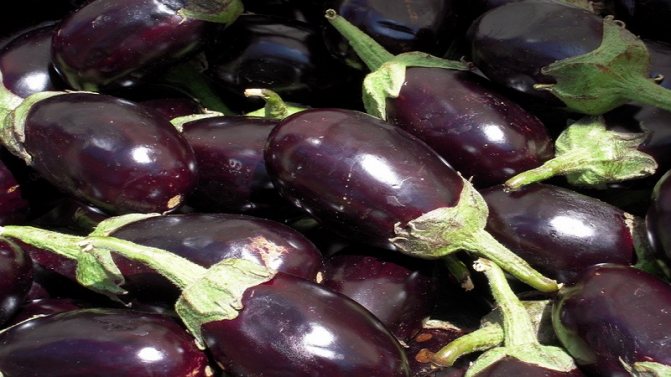

Algorithm and features of cultivation
Growing eggplant is not an easy task, even for an experienced farmer. This plant has a long growing season (100-150 days), so sowing should be done in early February. Given the whimsical nature of the southern guest, you will have to use the seedling method and plant the plant in a greenhouse.
To grow eggplants, you will need:
- Prepare the soil for seedlings. You can use both a special store and cook it yourself from humus and turf in proportions of 2: 1.
- Soak seeds for 12 hours. This will improve their germination.
- Plant the seeds in the ground 2 cm, water and cover with foil.
- As soon as the first shoots appear, remove the film.
- After a week, transplant seedlings into open ground.
- Take care of plants: regularly loosen and water the soil, eggplants are very fond of water.
- Fertilize the bushes three times over the summer using a mixture of mineral and organic fertilizers.
- Pay attention to hilling and weed control to get higher yields.
- Do not forget about the benefits of mulching. It accelerates ripening for a whole week, increases yields by 30%, and most importantly - protects plants from the harmful effects of the external environment and pests. Mulch can be organic (hay, grass, coniferous branches) and inorganic (polyethylene, roofing material). You can also use unnecessary paper and cardboard for mulching. The mulch is evenly spread between the bushes.
- Once the fruit has a characteristic glossy sheen, it's time to harvest.
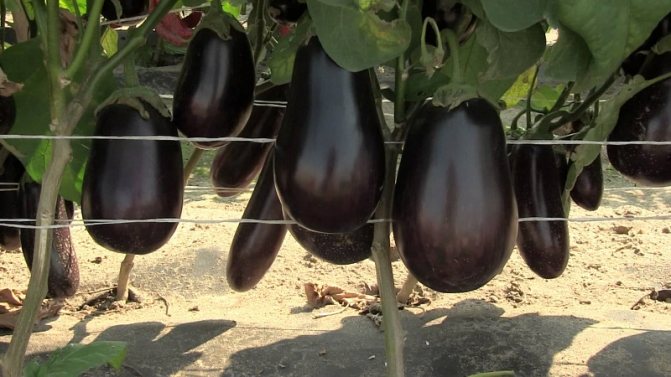

How to choose and store
If you do not start to get involved with the cultivation of eggplants with your own hands or do not have such an opportunity, then you should know the rules for choosing them when buying. Examine the body of the fetus carefully: there should be no damage, dents or suspicious stains on it. The vegetable itself must be firm enough. Do not take soft fruits: most likely, they are overripe or rotten.
It is better to store eggplants in the refrigerator without any container blocking the access of oxygen for several weeks. If you want to preserve the fruits for a longer period, then it is better to wilted or salted.
Name
The specific epithet of a plant - melongena
comes from Sanskrit
vatin ganah
, which gave the names of this fruit in other languages: Persian بادنجان ("
badinjyan
") And the Arabic باذنجان ("
baz̨injjan
", With the definite article -"
al-baz̨injyan
"). From the Arabic language, the word got into Spanish as
alberengena
(«
Alberenchen
"), And from there it changed into French as
aubergine
(«
Aubergin
"). In Latin and Italian
baz̨injjan
changed accordingly in
melongena
(«
melongena
") And
melanzana
(«
melanzana
"), Which was mistakenly interpreted as
mela insana
, "Crazy apple". In Portuguese, this vegetable was called
bringella
(«
bringella
"), And, thanks to the active trade of Portugal with India, this name" returned "to its homeland, but already in the form of"
brinjal
". In the West Indies, the Portuguese name changed as
brown-jolly
(«
brown jollie
»).[3]
The Russian "eggplant" most likely comes from the Turkish patlıcan
(«
patlijan
", In turn, which is a borrowing from the Persian language) or Tajik" باقلجان /
bolaҷon
».
Eggplant is sometimes called Armenian cucumber
(not to be confused with the Armenian cucumber - a melon variety) [4]. A.-B. Clos, traveling around Egypt and describing garden plants, noted that in this country there are two types of Armenian cucumber - white (Bidinjan abad) and purple (Bidinjan esuet) [5].
Application of eggplant
There are many different types of eggplant dishes. You can do anything with them: boil, fry, simmer, dry, grill, salt. The most popular dish from this vegetable in our country is eggplant caviar.
To prepare it you will need:
- eggplant - 600 g;
- onion - 1 pc .;
- medium carrots - 1 pc .;
- large tomato - 1 pc.;
- large garlic - 1 clove;
- parsley - a couple of branches;
- vegetable oil - 3-4 tbsp. l .;
- salt, sugar, ground black pepper - to taste;
- tomato ketchup (optional) - 1-2 tbsp. l.
Preparation:
- Wash, dry the vegetables, peel the carrots and onions.
- Pour vegetable oil into a preheated pan, put chopped onions and carrots, fry for 5-6 minutes.
- Add the diced eggplant, lightly fry it, add an incomplete glass of water, cover and simmer over medium heat for 10 minutes, stirring occasionally.
- When the eggplant becomes soft, add the tomato grated on a coarse grater, discard the skin. Season with salt, pepper, add a little sugar and cook for another 10 minutes.
- Add chopped herbs and garlic. Stir and cook for another minute.
- Let the caviar cool slightly, transfer to a blender and beat until the desired state: smooth or with small pieces. You can add more salt, sugar or pepper to taste.
- Put the prepared eggplant caviar in a deep dish, cover with cling film and refrigerate for a while to mix the flavors, although you can serve it right away.
Advice. The color in this case will be natural. If you want a richer red color, add some ketchup or tomato paste at the stage along with the grated tomato. Also for color, 1 tsp can be added to classic eggplant caviar. red ground paprika.
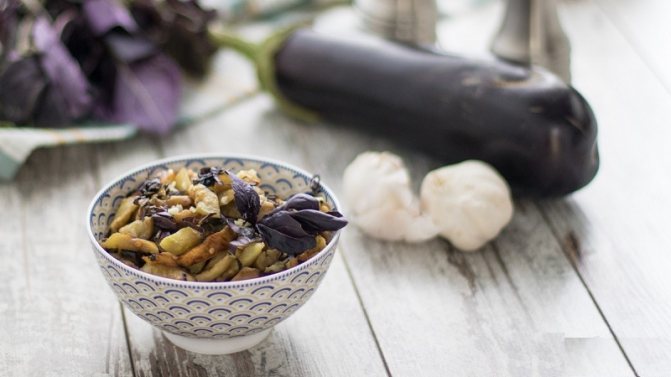

Such a varied diet
Thanks to our ancestors, we know how to preserve the aroma and taste of the berry for a long period.We bring to your attention options for preparations for the winter, which will provide you with a vitamin complex.
- "Mother-in-law's language". Pickled tongues are a favorite snack at any meal. Cooking is quite simple: peel the eggplants, cut them into slices, fry in a little oil, put in a sterile jar and fill with garlic marinade. This salting can be stored all winter.
- Delicate caviar. Eggplant paste can be added to sandwiches and eaten with a spoon. The secret of the recipe is to stew peeled berries. For taste and aroma, fry the carrots, onions, garlic. Add spices and grind the stew with a blender.
- Dried peel. Are you making preparations for the winter season? Don't rush to throw away the rough skin. Rinse it, distribute it evenly over the dishes and let it dry. Dry eggplant can be used for hypertension and for the treatment of cardiovascular diseases.
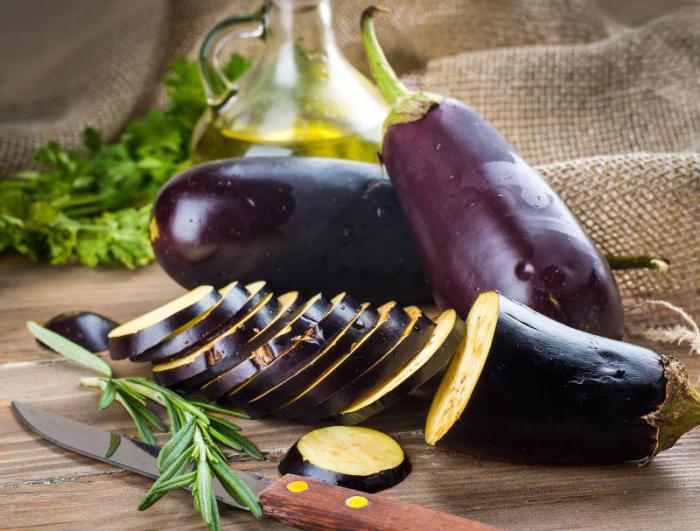

Now you are familiar with the benefits and harms of eggplant for human health. Definitely, this berry has much more pluses than minuses, so feel free to go to the store and get the ripe fruits. Show your imagination in the kitchen - and your culinary delights will surprise your family and friends.

